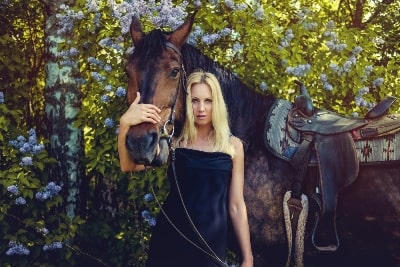Budgeting for Horse Ownership: How to Afford Your New Equine Companion
** Affiliate disclosure. This web site is supported by its awesome audience. When you click or purchase through links on our site, we may earn an affiliate commission.

Aspiring horse owners may dream of spending their days riding their majestic companions through picturesque landscapes. However, the reality of horse ownership can be quite expensive. In addition to the initial purchase or adoption cost, horse owners must also consider ongoing expenses such as feed, veterinary care, and stable maintenance. For those on a budget, the prospect of affording a horse may seem daunting. However, with careful planning and budgeting, owning a horse can be a feasible and rewarding experience.
Calculate Initial Costs
Before bringing a horse home, it’s essential to understand the initial costs involved. These include the purchase price or adoption fee, transportation costs, and any necessary equipment such as a saddle and bridle. It’s important to do research and budget for the appropriate equipment for your horse’s needs, such as a saddle that fits correctly.
Adoption fees for horses can range from a few hundred dollars to thousands of dollars, depending on the breed and age of the horse. Purchasing a horse can range from a few thousand to tens of thousands of dollars. It’s essential to have a clear understanding of your budget and what you can afford before making any decisions.
In addition to the initial costs, it’s also important to budget for ongoing expenses.
Ongoing Expenses
The ongoing expenses of owning a horse can add up quickly, so it’s important to budget accordingly. Here are some of the most common expenses to consider:
Feed and Supplements
Horses require regular feeding, and the cost of feed can vary depending on the type and quality of feed you choose. It’s important to research the nutritional needs of your horse and choose the appropriate feed and supplements to keep them healthy.
Veterinary Care
Horses require regular veterinary care, including vaccinations, deworming, dental care, and emergency care. It’s important to budget for these expenses to ensure your horse stays healthy and happy.
Farrier Care
Horses’ hooves grow quickly and require regular trimming and shoeing. The cost of farrier care can vary depending on the type of shoeing required, the frequency of visits, and the area in which you live.
Stable and Pasture Maintenance
Horses require a safe and comfortable living environment, whether it’s a stable or a pasture. The cost of stable and pasture maintenance can include bedding, manure removal, fencing, and pasture seeding.
Training and Lessons
If you’re a new horse owner, you may want to invest in training or lessons to improve your riding skills and build a bond with your horse. It’s important to budget for these expenses to ensure you and your horse are safe and happy.
Create a Budget
To manage the ongoing expenses of horse ownership, it’s important to create a budget. Here are some steps to follow:
Identify Your Income and Expenses
Start by identifying your monthly income and expenses. This includes your regular monthly bills, such as rent, utilities, and groceries, as well as any additional expenses, such as entertainment or travel.
Determine How Much You Can Afford
Once you have a clear understanding of your income and expenses, determine how much you can afford to allocate to your horse’s ongoing expenses. This will vary depending on your budget and the specific needs of your horse.
Prioritize Your Horse’s Needs
Based on your budget, prioritize your horse’s needs. This may include feed and supplements, veterinary care, and farrier care. Be sure to budget for unexpected expenses as well, such as emergency veterinary care.
Monitor Your Spending
Once you have a budget in place, monitor your spending to ensure you’re staying within your budget. Consider keeping a spreadsheet or using budgeting software to track your expenses and adjust your budget as needed.
Save Money Where You Can
There are several ways to save money on horse ownership without sacrificing the health and well-being of your horse. Here are a few tips:
Buy in Bulk
Buying horse feed and bedding in bulk can save money in the long run. Consider purchasing a year’s worth of feed at once, which may come with a discount.
DIY Stable and Pasture Maintenance
There are many tasks related to stable and pasture maintenance that you can do yourself, such as mucking stalls or repairing fencing. Consider learning these skills to save money on labor costs.
Look for Deals on Equipment
Check online marketplaces, classified ads, or local tack shops for deals on horse equipment. You can also consider buying used equipment in good condition instead of new equipment.
Consider Shared Ownership
If you’re on a tight budget, consider shared ownership with a friend or family member. This can help split the costs of horse ownership while still allowing you to enjoy time with your equine companion.
Final Thoughts
Owning a horse can be an incredibly rewarding experience, but it’s important to plan and budget accordingly to ensure the health and well-being of your horse. By calculating initial costs, identifying ongoing expenses, creating a budget, and saving money where you can, horse ownership can be a feasible and enjoyable experience for those on a budget. Remember to prioritize your horse’s needs and monitor your spending to ensure you’re staying within your budget. With careful planning and budgeting, you can afford the joy and companionship of owning a horse.

Sarah is the lead content developer at HorseKids.com She also writes in the pet and wellness space. On HorseKids.com Sarah specializes in covering the top products for horse lovers and DIY tips and articles.